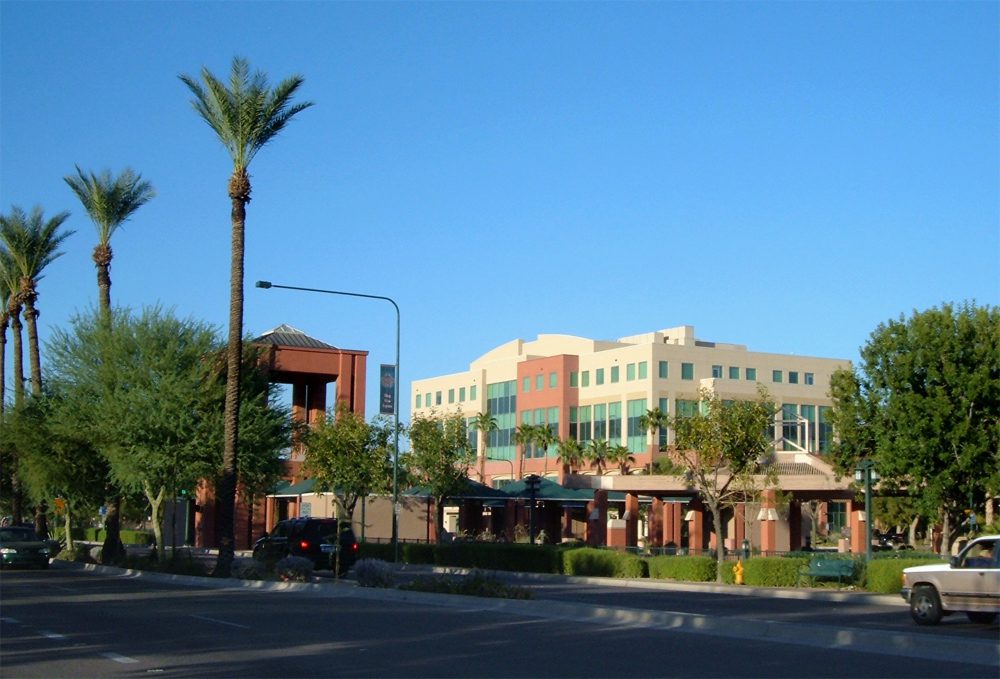May 19, 2023 – Groundwater recharge and the strategic use of storage credits form the bedrock of Arizona’s water management strategy. Storage credits, which represent quantities of legally banked water stored underground for future use, provide a lifeline in times of water shortage. Importantly, they can be transferred and sold, establishing a consistent water supply.
In arid regions like Arizona, where surface water can be limited, groundwater recharge becomes crucial for a sustainable water supply. The state employs advanced systems to artificially recharge groundwater using reclaimed or imported river water. This stored water, often banked for future use, not only ensures water security but also counteracts the effects of groundwater overdraft, mitigating environmental issues such as land subsidence and reduced river flows.
The City of Chandler, near Phoenix, has taken an innovative approach to water resource management , employing groundwater recharge and banking options.
, employing groundwater recharge and banking options.
Chandler Makes Strategic Move to Boost Local Aquifer
The City Counci l authorized the sale of storage capacity at the New River Agua Fria River Underground Storage Project (NAUSP) to the City of Avondale during the Council Meeting on May 11. This action forms part of a bigger plan to transition from aquifer replenishment at the West Valley facility towards more localized water distribution, benefiting Chandler’s aquifer once the new Reclaimed Water Interconnect Facility (RWIF) is operational.
l authorized the sale of storage capacity at the New River Agua Fria River Underground Storage Project (NAUSP) to the City of Avondale during the Council Meeting on May 11. This action forms part of a bigger plan to transition from aquifer replenishment at the West Valley facility towards more localized water distribution, benefiting Chandler’s aquifer once the new Reclaimed Water Interconnect Facility (RWIF) is operational.
Aligning With Sustainable Aquifer Management Goals
The City’s sustainable aquifer management goals emphasize replenishing the aquifer close to groundwater pumping sites. With this in mind, Chandler is shifting focus to prioritize aquifer replenishment within the same groundwater sub-basin where the City’s network of wells is located.
Collaborative Effort for Underground Storage Project
Back in 2007, the City of Chandler teamed up with Salt River Project (SRP) and several other cities to construct the NAUSP in Glendale, Ariz. Chandler owns 22.8% of the NAUSP storage entitlement and has been using the facility for aquifer recharge to meet state regulatory requirements for groundwater replenishment.
Progress with Reclaimed Water Interconnect Facility (RWIF)
Fast forward to last summer, the Chandler City Council greenlighted the innovative RWIF project , which is currently under construction. Once operational in 2024, the RWIF will empower Chandler to deliver up to five million gallons of water daily to the Tumbleweed Park Recharge Facility instead of Glendale’s underground storage facility.
, which is currently under construction. Once operational in 2024, the RWIF will empower Chandler to deliver up to five million gallons of water daily to the Tumbleweed Park Recharge Facility instead of Glendale’s underground storage facility.
Preparing for the Future: Avondale Steps In
As part of the preparations for this upcoming transition, the City of Avondale will acquire 18% of Chandler’s 22.8% NAUSP storage entitlement. This will leave Chandler with 4.8% storage, ensuring operational flexibility when additional recharge capacity is required.
Chandler’s Transitional Strategy: Leaseback with Avondale
To ensure a smooth transition during the completion of the new water conveyance infrastructure, Chandler will lease back 8% of the storage capacity from Avondale through 2026. This provides a transitional period to ramp up water delivery to the Tumbleweed Park aquifer injection wells.
Economic Implications: No Impact on Long-term Water Storage Credits
It’s important to note that the sale to Avondale only involves the transfer of 18% of Chandler’s storage entitlement in NAUSP, without affecting any long-term water storage credits. Chandler’s robust portfolio of long-term storage credits remains unaffected. The proceeds from the sale, approximately $5.7 million, will be channeled into Chandler’s water enterprise fund to support future projects and mitigate potential utility rate hikes, thereby maintaining Chandler’s competitively low utility rates.
Image:
Photograph of the downtown area of Chandler, Arizona . Taken from the west side of the sidewalk about 100 feet north of the intersection of Boston Street and Arizona Avenue. The light-colored building is the Chandler Office Center. This photograph was taken in October 2017 by Wikimedia Commons contributor “Ixnayonthetimmay “and modified by the photographer with Photoshop.
. Taken from the west side of the sidewalk about 100 feet north of the intersection of Boston Street and Arizona Avenue. The light-colored building is the Chandler Office Center. This photograph was taken in October 2017 by Wikimedia Commons contributor “Ixnayonthetimmay “and modified by the photographer with Photoshop.


Leave a Reply